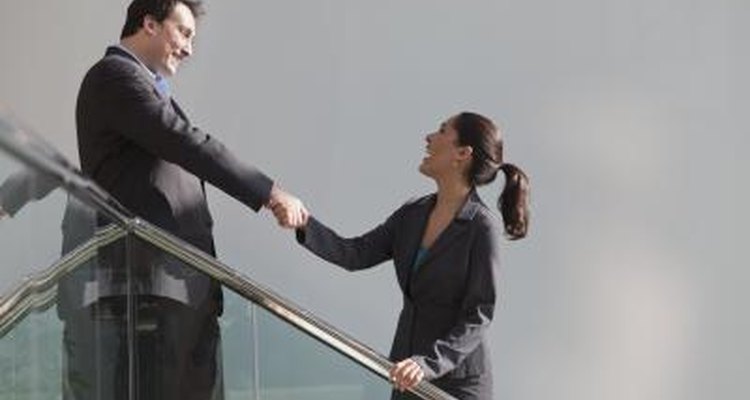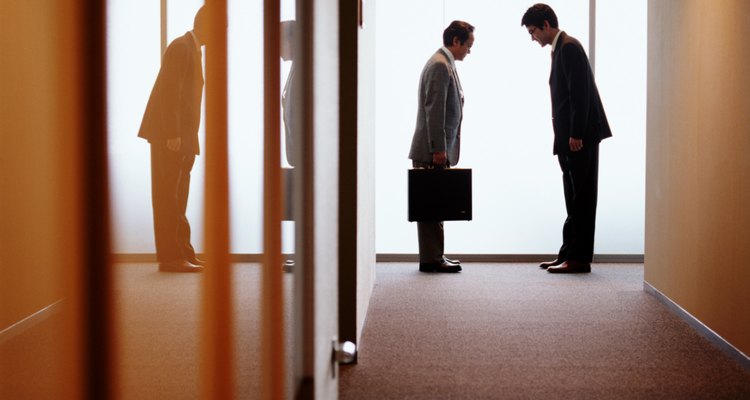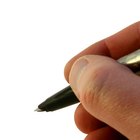
Americans tend to be more casual than people in a lot of other countries when it comes to greetings. This informality of greetings appears to stem from the sense of equality Americans generally felt, as immigrants to the country were not judged on family status but, rather, on their achievements and hard work. Other countries also have casual greetings between friends, family and co-workers of equal status but may be more formal in dealing with employers and those who appear to be of a higher status or who are strangers.
The Casual Verbal Greeting

Examples of a casual verbal greeting include "Hi," "Hello" or colloquialisms such as "Howdy" or "Yo." Sometimes the casual greeting can begin with a short question such as "What's up?," "How's it going?" or "How are you?" A person giving one of these question greetings does not usually expect an accurate answer. A simple "Fine," "Not too bad" or another neutral answer usually suffices, before the second greeter then returns the question.
Usually the greeters also incorporate a smile that reaches to the eyes as part of a casual greeting. This is to indicate to the other person that the greeter is pleased to see him. A casual verbal greeting may also be prefaced by a casual nonverbal greeting.
The Formal Verbal Greeting

Formal verbal greetings are generally longer than a casual greeting and usually combine two or more individual types of greetings. For example, if a businessman greets another businessman, he will shake his hand, say "Hello" and ask a question such as "How are you?" or introduce himself and give his business title or job role.
A formal greeting may also depend on the status of the people involved in the greeting. An older or superior person may also touch a younger person or a person of inferior status on the shoulder in a paternal way. An interviewee should also stand up before shaking hands with his interviewers.
Nonverbal Greeting

Sometimes people give each other nonverbal greetings. This can be due to the fact that the two people are too far away from each other to hear a spoken greeting but still wish to acknowledge each other. Sometimes a person will give a nonverbal greeting to another person if she is devoting a lot of attention to a task. For example, someone who's on the phone may not wish to interrupt the conversation by saying hello, so she gives the newcomer a nonverbal sign of greeting.
Examples of nonverbal greetings include a wave of the hand with the palm facing out, a hand wave with the fingers moving down repetitively to the palm and back (usually given to young children), a wink of the eye or a simple smile and eye contact.
Other nonverbal signs that greeters perform are part of the greeting ritual. For example, men commonly shake hands with each other or give each other a pat on the back. Women may give each other a hug and a kiss on the cheek. Women greeting men and men greeting women may also hug and kiss each other on the cheek, especially if they are related. Adults greeting children may give them a hug, or even pick them up and swing them around.
Global Greetings

Different cultures may use other greeting styles. For example, the French kiss each other on both cheeks. Japanese people bow to each other. Indians and Nepalis touch the palms of both hands together with the fingertips pointed upward and bow slightly to show respect.
Related Articles

Male Gestures That Indicate He Is ...

How to Compare Male and Female ...

Mexican Dating Rules

How to Tell He's Insecure

How to Read a Man's Facial Expressions

Shawl Collar Vs. Lapel Tuxedo

How to Greet a First Date

How to Communicate With My Husband ...

Effective Face-to-Face Communication

Wedding Rehearsal Dinner Toast Examples

How to Tie an Army Necktie

How to Dress for a Gala for Men

Thank You Note Etiquette for Envelopes

What Is a Roving Eye?

What Does Creative Black Tie Attire ...

Decoding a Man's Hug

Rules for Monogramming Shirt Cuffs

Early Signs of Contempt

How to Flirt With Your Best Guy Friend

How to Tell If a Girl is Lying
References
Writer Bio
Jillian O'Keeffe has been a freelance writer since 2009. Her work appears in regional Irish newspapers including "The Connacht Tribune" and the "Sentinel." O'Keeffe has a Master of Arts in journalism from the National University of Ireland, Galway and a Bachelor of Science in microbiology from University College Cork.
Photo Credits
Huntstock/Huntstock/Getty Images